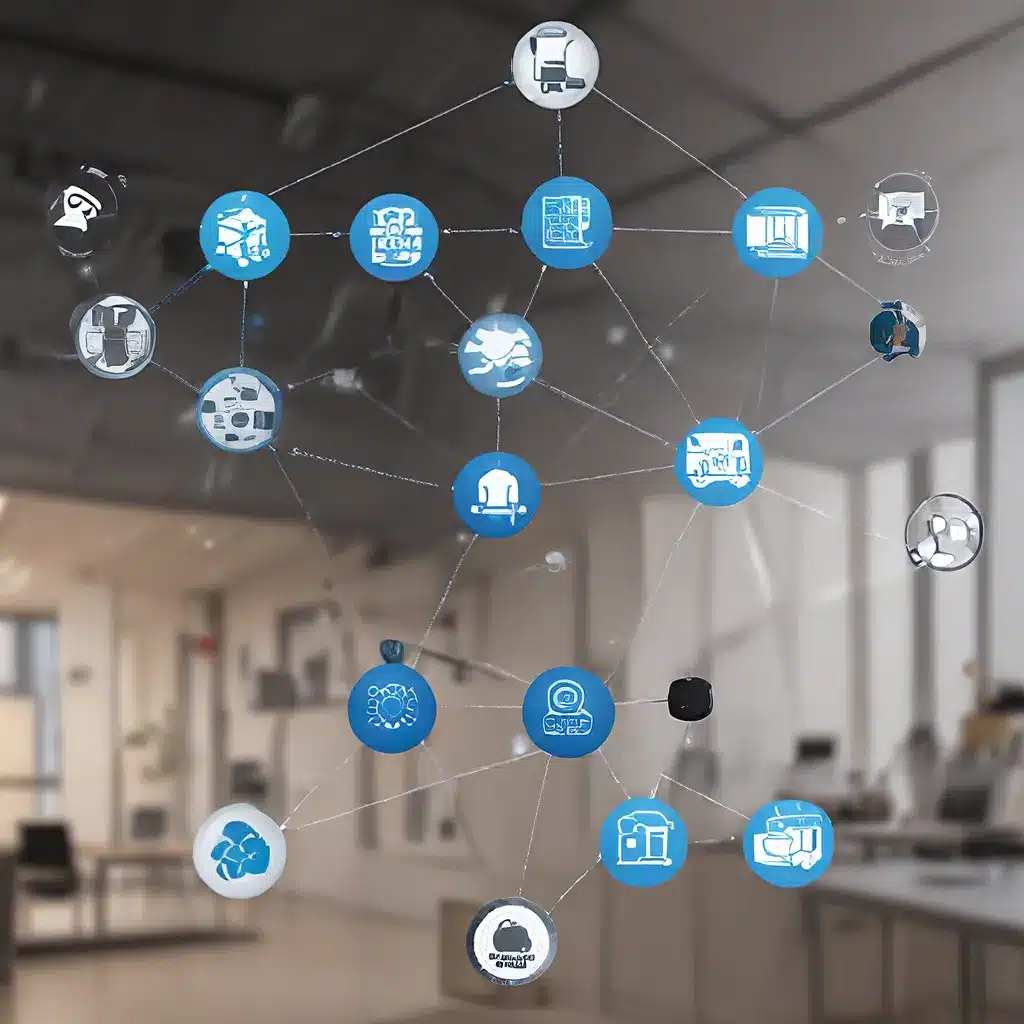
In the rapidly evolving world of the Internet of Things (IoT), the ability to effectively coordinate and manage sensor networks has become a critical challenge. As the number of connected devices continues to grow exponentially, the need for efficient and adaptive task allocation and resource optimization strategies has become paramount. This article delves into the intricacies of distributed sensor coordination, exploring how it can unlock new possibilities for collaborative IoT applications and drive advancements in energy management and security.
The Rise of Distributed Sensor Networks
The emergence of distributed sensor networks has revolutionized the way we collect, process, and utilize data. These decentralized systems, composed of numerous interconnected sensors, offer a range of benefits over traditional centralized approaches. By distributing intelligence and decision-making across multiple nodes, distributed sensor networks can enhance resilience, reduce latency, and improve scalability – all crucial factors in the dynamic, data-driven world of IoT.
One of the key advantages of distributed sensor networks is their ability to adapt to changing environments and respond to evolving needs. Unlike centralized systems, where a single point of failure can cripple the entire network, distributed architectures are inherently more resilient and fault-tolerant. If one or more sensors fail or become unavailable, the remaining nodes can seamlessly reorganize and reallocate tasks, ensuring continuous operation and uninterrupted data collection.
Collaborative Task Allocation in Distributed Sensor Networks
At the heart of effective distributed sensor coordination lies the challenge of task allocation. In a distributed IoT ecosystem, sensors must cooperate and coordinate their efforts to achieve common objectives, whether it’s monitoring environmental conditions, tracking asset movements, or ensuring optimal energy consumption.
Emerging research has focused on developing decentralized algorithms and swarm-based approaches to tackle this challenge. These techniques leverage the collective intelligence of sensor nodes, allowing them to self-organize, negotiate, and dynamically assign tasks based on their respective capabilities, resource availability, and environmental factors.
By employing collaborative task allocation strategies, distributed sensor networks can optimize resource utilization, minimize response times, and enhance the overall efficiency of IoT applications. This is particularly crucial in scenarios where time-sensitivity, energy constraints, or limited computational resources are a concern.
Unlocking the Potential of Distributed Sensor Coordination
The potential of distributed sensor coordination extends far beyond just task allocation. By leveraging the collaborative nature of these networks, IoT applications can unlock a myriad of innovative use cases and transformative opportunities.
Energy-Efficient IoT Ecosystem
One of the most significant benefits of distributed sensor coordination is its impact on energy management. Sensor nodes within a distributed network can share information, coordinate their activities, and optimize their energy consumption based on real-time data and environmental conditions. This energy-aware approach can lead to significant reductions in power usage, prolonging the operational lifetime of IoT devices and minimizing the environmental footprint of sensor-driven applications.
Sensor networks equipped with distributed coordination mechanisms can also dynamically adjust their sampling rates, communication frequencies, and processing loads to match the specific requirements of the task at hand. By adapting to changing conditions, these networks can avoid unnecessary energy expenditure and enhance the overall energy efficiency** of the IoT ecosystem.
Robust and Secure IoT Deployments
In addition to energy optimization, distributed sensor coordination can also bolster the security of IoT systems. By decentralizing the decision-making and distributing the trust across multiple nodes, these networks reduce the risk of single points of failure and mitigate the impact of potential attacks.
Distributed sensor networks can implement cooperative intrusion detection mechanisms, where nodes share threat information, collaborate on anomaly identification, and respond collectively to security breaches. This distributed approach to security can enhance the resilience of IoT deployments and better protect against cyber threats, such as unauthorized access, data tampering, and denial-of-service attacks.
Enabling Scalable and Adaptive IoT Solutions
As the IoT landscape continues to evolve, the ability to scale and adapt to changing requirements has become increasingly crucial. Distributed sensor coordination plays a vital role in enabling scalable and adaptive IoT solutions.
By leveraging the self-organizing and self-healing capabilities of distributed sensor networks, IoT systems can seamlessly accommodate the addition or removal of sensors, adjust to fluctuations in workloads, and respond to dynamic changes in the environment. This inherent flexibility allows IoT applications to grow and evolve in tandem with the needs of the business or the community they serve.
Moreover, the decentralized nature of distributed sensor coordination facilitates the integration of heterogeneous devices and the seamless fusion of data from diverse sources. This interoperability and adaptability are crucial in creating comprehensive, data-driven IoT ecosystems that can deliver valuable insights and support informed decision-making.
Conclusion
As the IoT landscape continues to expand, the need for efficient and adaptive sensor network coordination has become increasingly crucial. Distributed sensor coordination offers a transformative approach, empowering IoT applications with enhanced resilience, energy efficiency, security, and scalability.
By harnessing the collective intelligence and collaborative nature of distributed sensor networks, IoT deployments can unlock new possibilities, optimize resource utilization, and drive groundbreaking advancements in a wide range of industries. As the technological landscape evolves, the strategic implementation of distributed sensor coordination will undoubtedly play a pivotal role in shaping the future of the Internet of Things.